At the end of the eighties, the British Army initiated several studies to examine the requirements for its future light armoured vehicle fleet.
In 1970, the Fighting Vehicles Research and Development Establishment (FVRDE) at Chertsey and the Military Experimental Engineering Establishment (MEXE) at Christchurch amalgamated to form the Military Vehicles and Engineering Establishment (MVEE).
Family of Light Armoured Vehicles (FLAV)
Together with the British Army, MVEE conducted a study called the Family of Light Armoured Vehicles (FLAV) that was intended to inform replacements for CVR(T), FV432, Fox and Ferret, Saxon and Saracen, and some B vehicles.
Six types of protected vehicles were recommended by FLAV, including three tracked and three wheeled models.
The tracked vehicles would be in three weight classes; 8 to 14 tonnes, 14 to 20 tonnes, and 20 to 30 tonnes.
The wheeled vehicles would also be in three weight classes; 3 to 8 tonnes, 8 to 12 tonnes, and 12 to 24 tonnes.
The big four UK armoured vehicle manufacturers all replied to the study request.
- Alvis: CVR(T), Stormer, and Ferret 80
- Vickers Defence Systems: Mk 5 Light Tank, NVH1, Valkyr, Vedette
- Royal Ordnance: RO 2000, Pandur
- GKN: Warrior, Saxon, Simba
This mix contained some intriguing vehicles that are worth examining for further insight.
Alvis
The Military Vehicles and Engineering Establishment (MVEE) created a larger version of CVR(T) after completing the work on it in the seventies.
In 1981, Alvis acquired the manufacturing and marketing rights for the then-designated FV4333 and renamed it Stormer.
CVR(T) was already in use, and Stormer was a larger version that Alvis proposed to replace FV432.

Although only the basic APC was presented as a prototype, other variants were presented as potential alternatives for FLAV.

Shortly afterwards, Alvis announced the purchase of twenty-five Stormer APCs by Malaysia.
Twelve of their Stormer APCs would be fitted with a Helio FVT 900 one man turret equipped with a 20 mm Oerlikon Contraves automatic cannon.
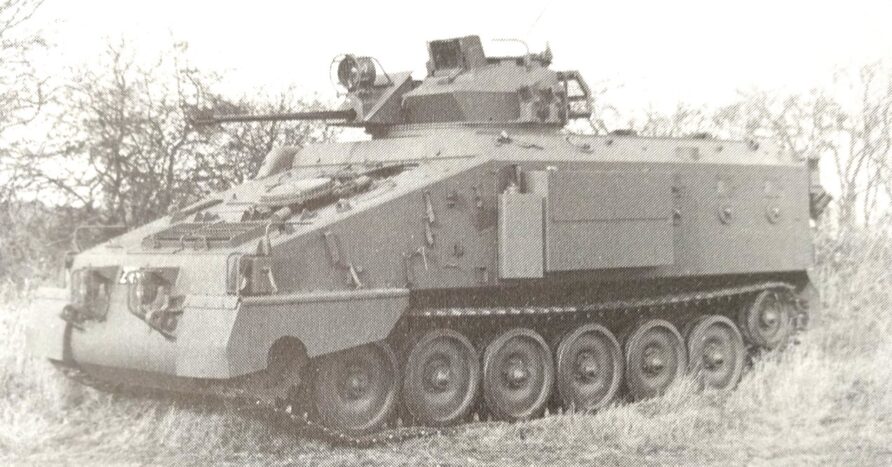
A comprehensive design and component refresh was completed in 1984 for the first Ferret 80 prototype.

The Helio FVT 900 20 mm turret supplied to Malaysia was used in the proposed version.

Vickers Defence Systems
Vickers Defence and Norinco in China came up with a hybrid solution that combined the MCV-80 turret with a Type 58 armoured personnel carrier.
Many sources indicate that it was intended for export, although it is difficult to imagine the British Army bringing a Chinese vehicle into service.
Project Waler may have some connection to the Vickers Vedette, although this is speculation on my part.
The Vickers Valkyr was a competent vehicle aimed at battling the GKN Saxon.
Timony (Ireland) and Beherman-Demoen (Belgium) had collaborated on a 4×4 vehicle called the BDX, a version of the Timony Mark V APC.
This was further enhanced by Vickers Defence and referred to as Valkyr, or BDX Mark II.

There were two roof heights and several variants that were amphibious.
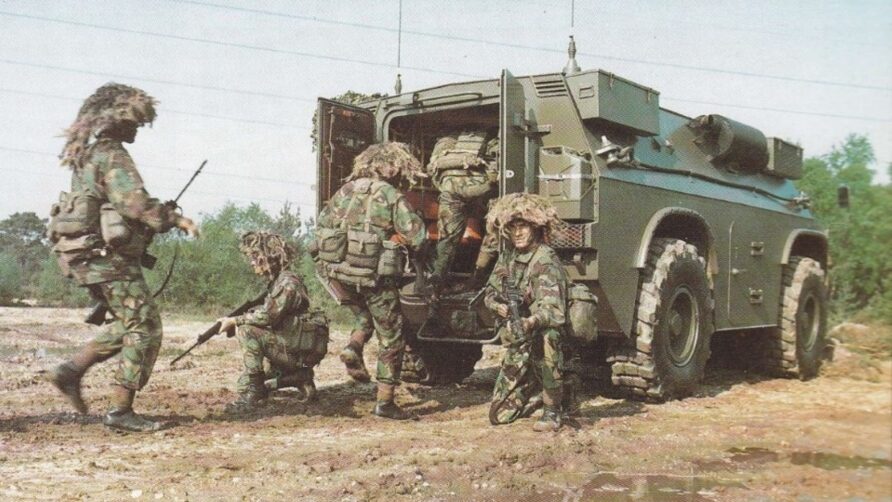
The prototype Fire Support Vehicle with a low roof and a Cockerill 90 mm turret was presented in 1982, followed by the high roof APC in 1984, and finally, an internal security version in 1986.
Royal Ordnance
The Royal Ordnance Factory (ROF) suggested using their RO2000 vehicles for heavier tracked versions.
It was developed jointly with Egypt, and was unusual for the time in that it featured a module-capable design.
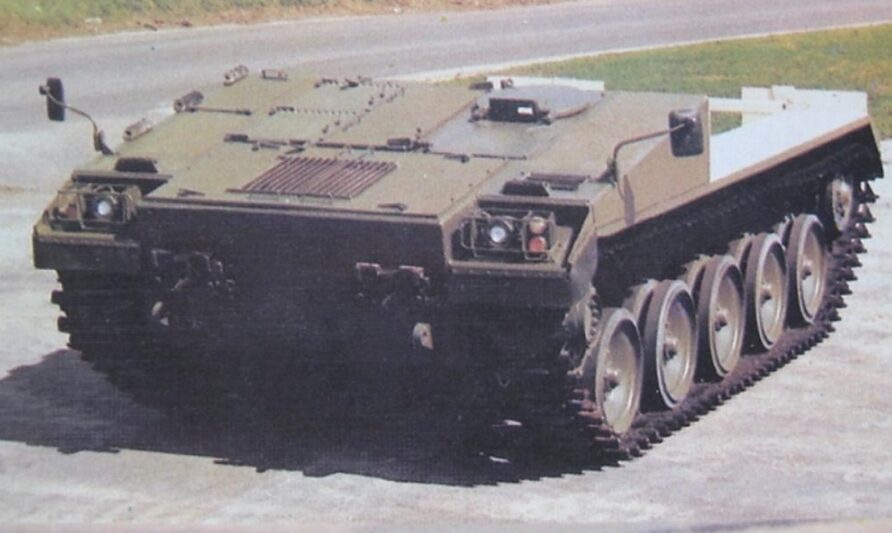
The RO2000 vehicle was designed for overseas manufacture and was available in several variants, including a D20 Gun System (RO 2001), a fixed 105 mm gun from the Abbot SPG (RO 2002), a turreted 120 mm mortar (RO 2003), and a Light Tank equipped with a 105 mm main gun (RO 2004)

The RO2000 series of vehicles was first shown in 1986, just as FLAV ended, but did not enter service.
More images at this LINK
For the wheeled component, Royal Ordnance partnered with Steyr Daimler Puch to offer the Pandur I.
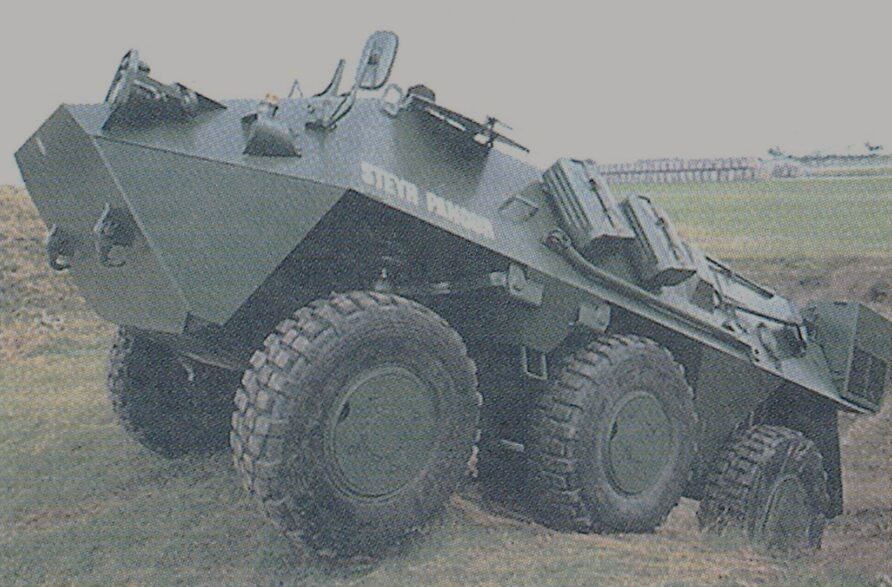
GKN
There were already versions of the Warrior and Saxon vehicles in service, and the Simba vehicle was also proposed.
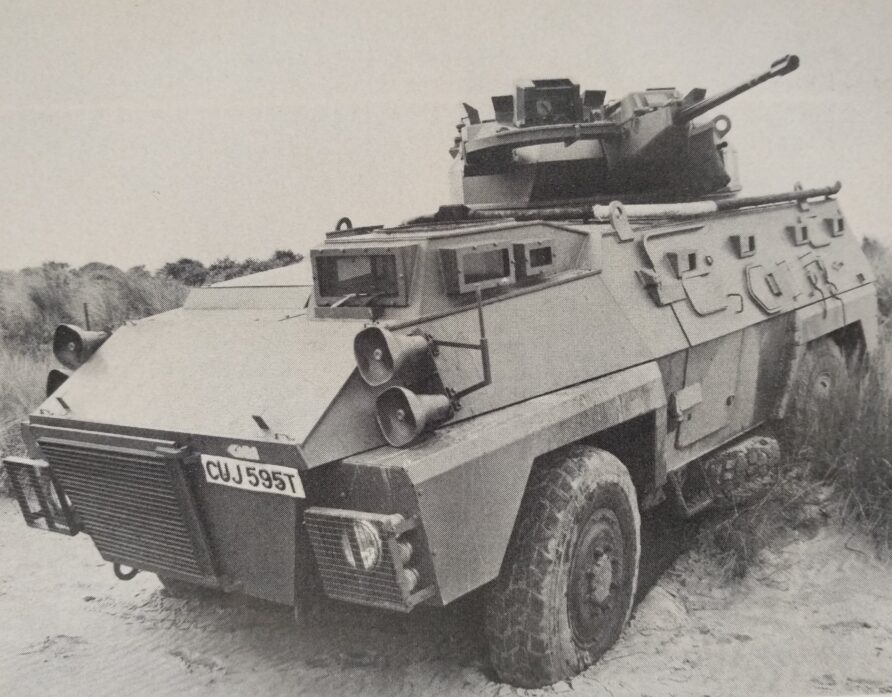
Simba was a private venture development intended primarily for export, and was simple and robust.

1986 marked the completion of the FLAV investigation.
Future Family of Light Armoured Vehicles (FFLAV)
In 1988, FLAV then became FFLAV, the Future Family of Light Armoured Vehicles (FFLAV), with the goal of starting procurement in 1991.
FFLAV examined the vehicle fleet of the Army and arrived at the correct conclusion that there were too many types with overlapping roles. It was recommended that the equipment in service be consolidated through a more coherent approach. It included a wider range of roles and higher levels of protection for some vehicles, changing the weight classifications from FLAV.
As a result, FFLAV was believed to have the potential for over several thousand vehicles.

To say the market was excited would be an understatement, but then this happened.

Regardless, the industry carried on.
Alvis
Alvis, together with Hägglunds AB from Sweden, Panhard from France, and ENASA from Spain, suggested a range of vehicles with wheels and tracks with weights from 3.5 to 24 tonnes.

Alvis Stormer and CVR(T) would be further developed to fill the 8–10 tonnes and 9-13 tonnes weight classifications.
The 20–24 tonnes CV90 would be provided by Hägglunds for the Armoured Personnel Carrier (APC), reconnaissance, observation, recovery, repair, self-propelled mortar, infantry fighting vehicle and engineer tractor requirements.

Instead of Ferret 80 in FLAV, Alvis teamed up with Panhard for the Véhicule Blindé Léger (VBL), for the Armoured Personnel Carrier (APC), Ambulance, Recovery, Repair, Command and Control, and Medium Calibre Weapon Carriers.

The 14-19 tonne wheeled requirements would be met by the ENASA (Empresa Nacional de Autocamiones S.A.) BMR-600.

The BMR-600 (Blindado Medio Ruedas) came from a late seventies Spanish army requirement for an armoured vehicle in several variants including a 2+10 APC, ambulance, weapon carrier and repair/recovery vehicle.
GKN
GKN partnered with Mowag of Switzerland to create the GKN Piranha. They eventually sold these to Oman and Saudi Arabia.
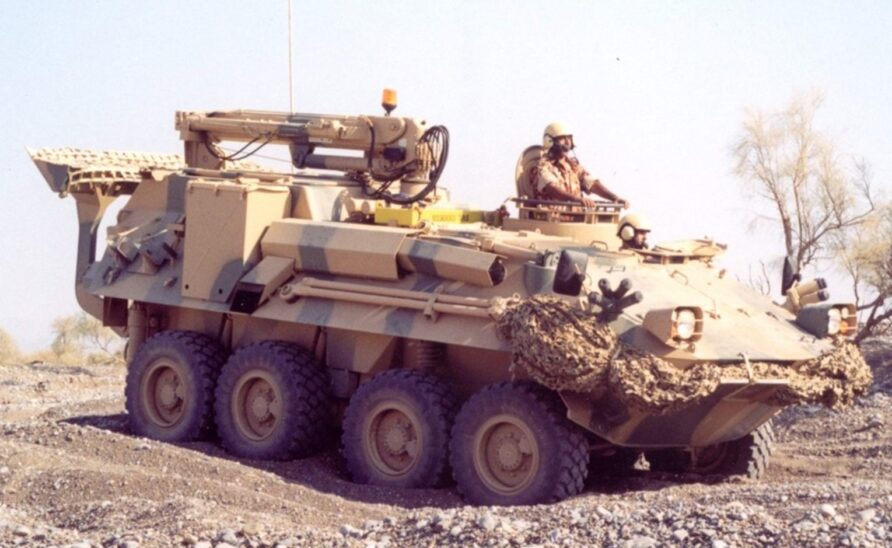
GKN’s Saxon and Simba vehicles met the lighter wheeled vehicle requirements.
As part of its proposal for the FFLAV competition, GKN developed a smaller Warrior, like the 5-roadwheel APC described below. This would eventually be more widely known as Warrior Reconnaissance as it developed further, although the correct term was Defence Reconnaissance Variant (DRV)
The first iteration featured a stabilised turret with an M-242 25 mm Bushmaster cannon and twin TOW ATGW launchers. The vehicle carried 500 rounds of ammunition for the cannon and an additional four TOW missiles in the rear compartment.

A later version featured new radar-absorbent appliqué panels and was equipped with an elevating sensor mast with a multispectral surveillance system utilising radar, thermal imaging, day/night sights and a laser rangefinder/target designator.

The reduction in size and payload over a normal Warrior, but retention of the same power plant, improved the power-to-weight ratio significantly. Additional communications equipment and an integrated sensor management system completed the specification.
Some of the work on Warrior DRV also spanned FFLAV and TRACER.
Warrior 2000 was subsequently suggested by GKN for the heavier tracked variants.
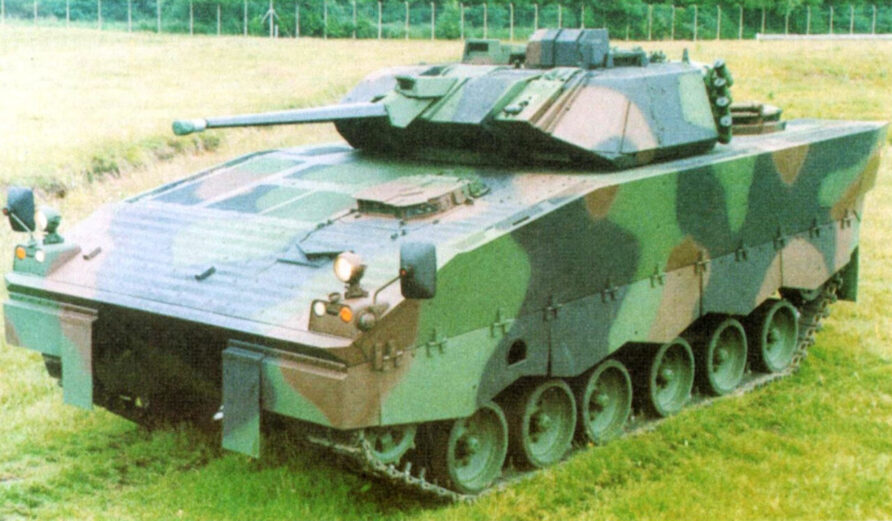
GKN previously created a smaller version of Warrior that was designed to be carried inside a C-130, called Warrior Low Profile. The designation for this version was LOVATT
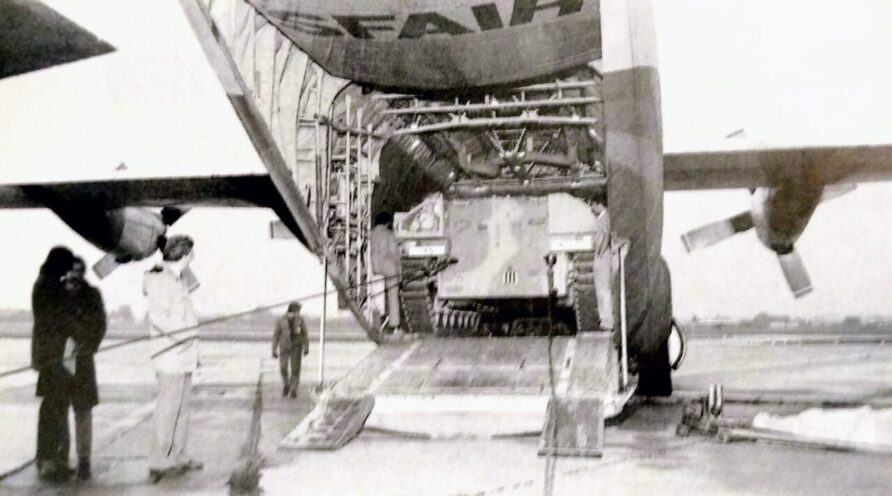
It still had 6 road wheels, seen below with an ADATS fit.

This was a strong proposition that would have resulted in high levels of commonality across the British Army’s tracked fighting vehicle fleet, it would be based almost entirely on Warrior.
Then this happened

The 1991 Gulf War had shown that the legacy fleet had many shortcomings, especially the ageing FV432 and CVR(T) vehicle families.
Although there was recognition before the Gulf War that replacements were needed, operations in Kuwait and Iraq simply reinforced the basic requirements embodied in the FFLAV study.
Subsequently, FFLAV was cancelled, while CVR(T), Saxon, FV432 and others continued.
Below is a visual representation of the vehicles that were considered for FLAV and FFLAV, but all were rejected.
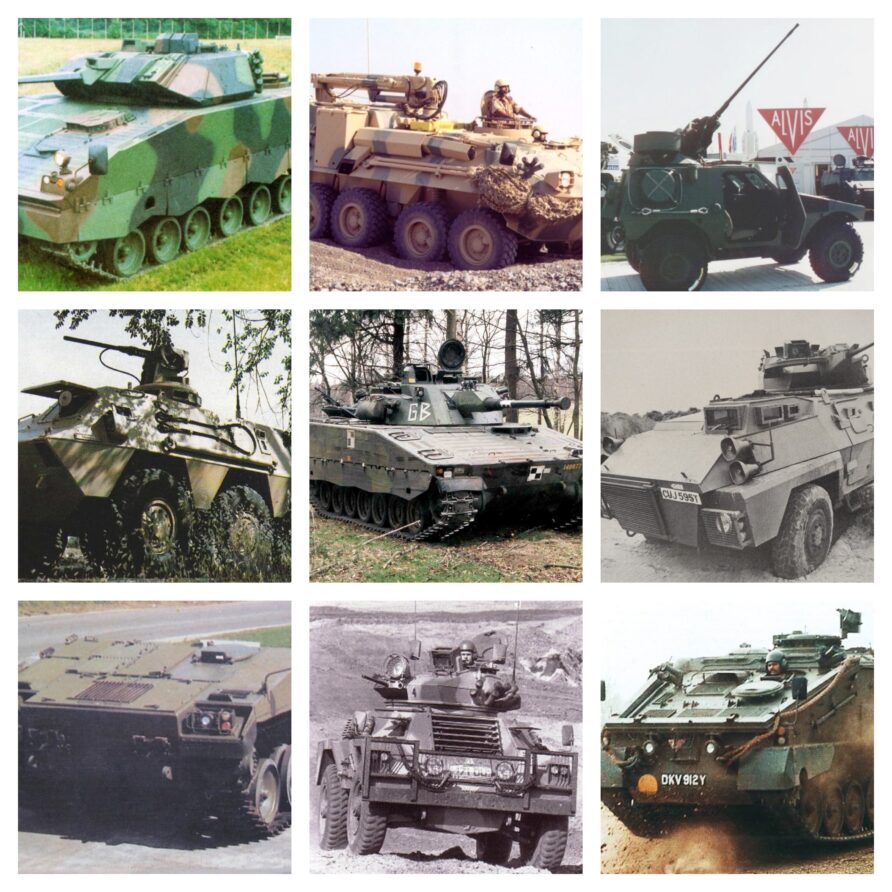
After FFLAV, anew Light Armoured Vehicle Strategy was endorsed that split the general requirements into three.
The reconnaissance element would be met with the Tactical Reconnaissance Armoured Combat Equipment Requirement (TRACER).
Protected mobility would be met with the Multi Base Armoured Vehicle (MBAV), with this in two parts. M1P1 would go on to become MRAV (and eventually Boxer) and M2P2 would be described as the Armoured Battlegroup Support Vehicle (ABSV).
Finally, the command and liaison requirement would be met with the Future Command and Liaison Vehicle (FCLV)
Discover more from Think Defence
Subscribe to get the latest posts sent to your email.

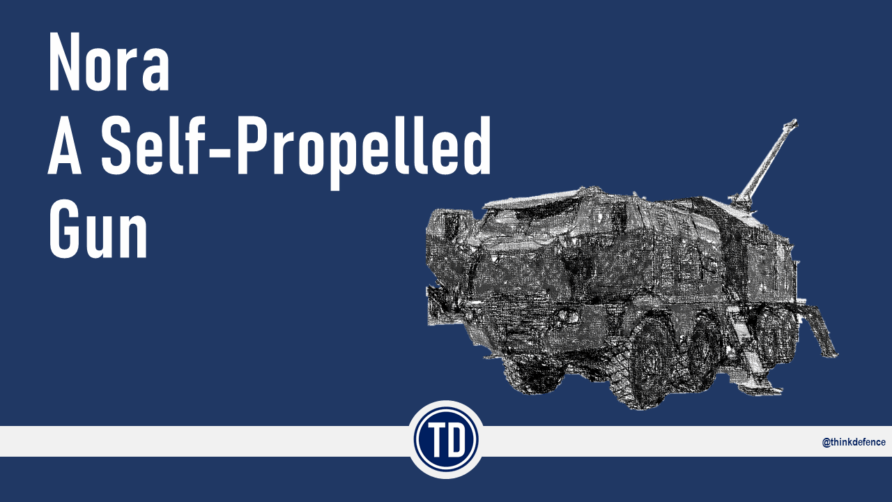
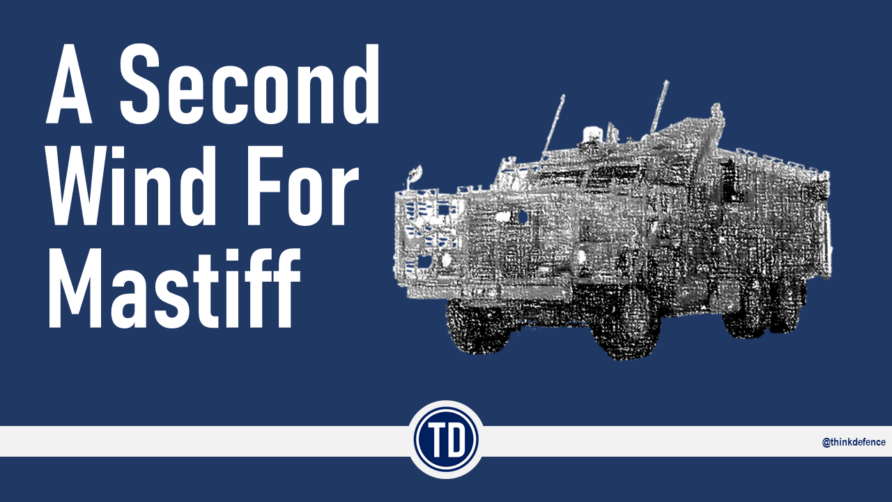
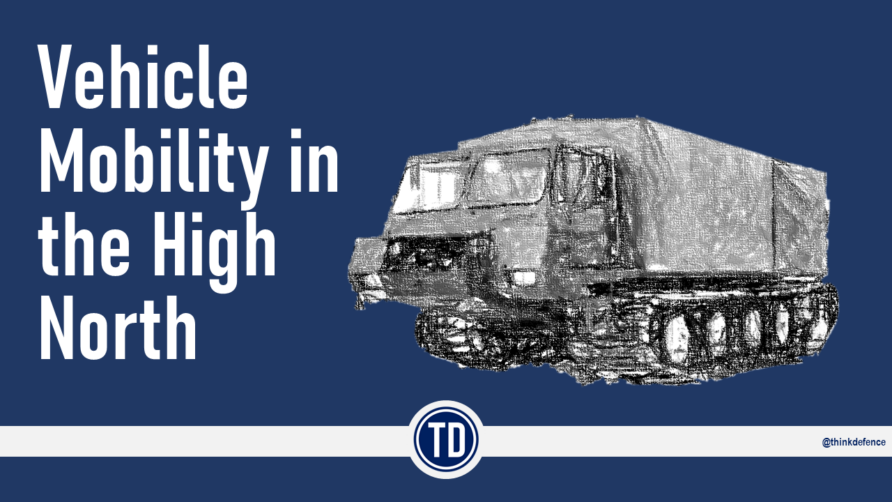
Oops missed some boxes when I made my last comments. I noted that over the years you had mentioned
MRV-P, FCLV, OUVS, FLAV, MRAP, TRACER, FRES, LSV, AND FATV , plus many photos of contenders. Which of these are continuing projects and which are now cancelled? Can you give us your best estimate of the types of military vehicles likely to be in service in say ten years time, from the Supacat 6×6 load carrier to Challenger 3
Working up to that William!
A very interesting article thank you, but more of a history lesson. How many of the large variety of vehicles shown actually made it into service or are likely to be so?